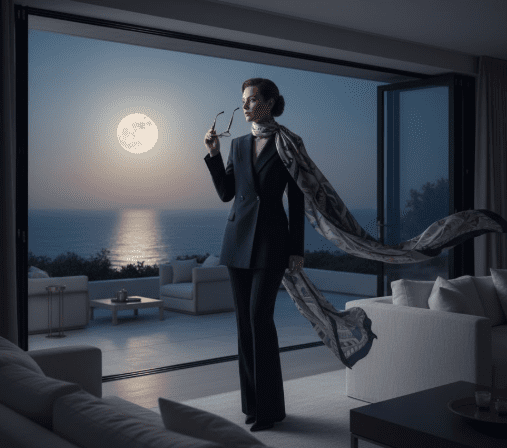Why the Closet Holds the Costume Answer
When you begin with what’s already in your wardrobe, you skip novelty and head straight to identity. The fabrics you own, the silhouettes you favour, the accessories you trust—they each carry meaning. As the article on DIY costumes notes, repurposing wardrobe staples can create high-impact looks quickly and sustainably. :contentReference[oaicite:11]{index=11}
In addition, by styling what you already have, you bring authenticity. Your costume then reflects you, not just a theme. This is what distinguishes luxury DIY from last-minute impulse purchases.
Step 1: Audit Your Wardrobe with Intent
Begin with method. Empty a section of your closet and categorize pieces by mood: tailored jackets, silk dresses, patterned skirts, vintage accessories. Ask: Which item could become the anchor of a costume? For example, a silk scarf might become a dramatic cape; a blazer might shift into a classic detective silhouette.
Because you’re targeting a high-style result, note fabrics, fit, condition and versatility. Use the listing in “Halloween Costumes Using Basic Items in Your Closet” for reference. :contentReference[oaicite:12]{index=12}
Step 2: Select Three Core Pieces and One Signature Accent
Your costume should centre on three pieces you own and one standout accessory. For instance: a white button-down shirt + dark trousers + vest becomes a noir detective; then add a fedora or vintage pocket watch as the accent. The fewer but smarter pieces you choose, the stronger the effect.
Luxury does not mean complexity. Restraint in components often results in maximum clarity of vision.
Step 3: Reframe the Story of Each Piece
Once you’ve selected your pieces, rename them in your mind. That silk scarf isn’t a scarf—it’s a flight attendant’s epaulet or a Victorian adventurer’s sash. The jeans become cargo for a photojournalist’s use. Change the narrative, and the piece changes context.
The DIY refashion article explores how upcycled pieces can morph into costume ideas when you shift the story. :contentReference[oaicite:13]{index=13}
Step 4: Use Contrast and Movement to Elevate the Look
Luxury DIY costume design pays attention to optics. Mix textures: a satin blouse, linen trousers, metallic accessory. Consider movement: how your clothes will flow, catch light or respond to wind. For a Hamptons-inspired setting, fabric that brushes softly against outdoor light is ideal.
Additionally, contrast gives depth—pair something structured (like a blazer) with something fluid (like a silk skirt). The eye will register elegance, not costume.
Step 5: Accessorize with Intent and Minimalism
The accessory should feel inevitable—not added. One remarkable piece is enough. Perhaps a vintage brooch, oversized belt, or sculptural headpiece. Use what you own—maybe that old leather bag becomes a prop; those silver cufflinks become tie-rats. Your accessory anchors the look and signals purpose.
Step 6: Stitch, Tailor or Tweak Slightly—but Use What You Have
Small alterations can make big impact. Hem that skirt into midi length, change buttons, tuck a jacket into a sash. These tweaks don’t require new purchases—they refine what you own. For detailed costume construction references, consider classic texts like Make Your Own Costumes and Disguises. :contentReference[oaicite:15]{index=15}
Thus your costume remains authentic to your closet and purposeful in execution.
Step 7: Plan the Reveal – Entry, Environment, and Aura
Even the best costume fails if the setting doesn’t support it. If you’re attending a Hamptons party, consider the venue: outdoor terrace, twilight, or poolside. Align your look with the environment. For styling insight in the Hamptons context, reference the article on Hamptons white-party looks. :contentReference[oaicite:16]{index=16}
Ensure your reveal has a moment: arrival, photo-op, movement across space. In that moment, your costume stops being an outfit—it becomes a scene.
Step 8: Capture the Story and Wear It Again
Luxury isn’t disposable. If you build your costume from wardrobe staples, plan to re-wear. Maybe the jacket returns to cocktail attire; maybe the scarf becomes an accent for winter layering. Document the look, post it, own it.
The key phrase how to build a creative Halloween costume using only what’s in your closet becomes not just a strategy—but a lasting style mindset.
Final Word: Your Wardrobe as Narrative
Your closet holds characters—you need only decide which one to become. By mastering how to build a creative Halloween costume using only what’s in your closet, you turn rehearsal into performance and wear into a story. In the end, your costume isn’t about Halloween—it’s about identity.
